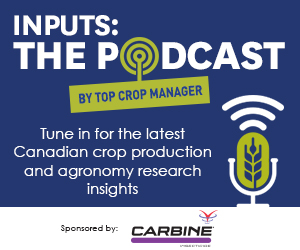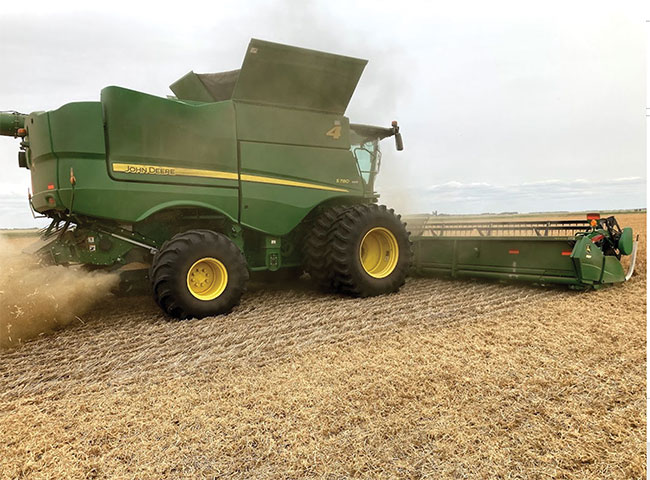| |
| |
 |
 |
| |
 |
|
@{mv_date_MMM d, yyyy}@ |
|
| |
 Federal ministers have announced next steps toward a sustainable approach to pesticides management while giving farmers the tools they need to keep providing reliable access to safe and nutritious food.
» Read More...
Federal ministers have announced next steps toward a sustainable approach to pesticides management while giving farmers the tools they need to keep providing reliable access to safe and nutritious food.
» Read More...
Researchers at the universities of Saskatchewan, Idaho and Washington State are interested in enhancing biochar – which can be used as a soil amendment – by adding phosphorus, a crucial nutrient for crops.
» Read More...
Azotic Technologies Ltd. announced Envita, a liquid-formulation, nitrogen-fixing product, has been approved for organic use in Canada.
» Read More...
|
| |
 |
 |
| |
|
| |

They may be hard to see, but don’t make the mistake of neglecting these tiny, green pests until it’s too late! Aphids can cause damage to several crops, particularly when high numbers descend on your field, as can lygus bugs, which can wreak havoc even in lower quantities.
In this episode of Inputs, John Gavloski, an entomologist with Manitoba Agriculture, and Rachel Evans, technical sales manager for the eastern Prairies with FMC Canada, talk about how to control aphids and lygus bugs, as well as what growers can expect this coming season.
» Listen now... |
| |
|
| |
 How does herbicide resistance spread to a producer’s field? Does it always arise locally due to overuse of single modes of action? Or, if it comes from elsewhere, how does genetic information carrying herbicide resistance gain a foothold in the field? Led by a researcher from University of Nebraska-Lincoln, a study set out to examine the potential for herbicide resistance transfer via pollen.
» Read more...
How does herbicide resistance spread to a producer’s field? Does it always arise locally due to overuse of single modes of action? Or, if it comes from elsewhere, how does genetic information carrying herbicide resistance gain a foothold in the field? Led by a researcher from University of Nebraska-Lincoln, a study set out to examine the potential for herbicide resistance transfer via pollen.
» Read more... |
| |
 Harvest weed seed control was born in Australia to help combat herbicide-resistant weeds. In Canada, there's been interest in impact mills such as the Harrington Seed Destructor, Seed Terminator, Weed Hog and Redekop’s Seed Control Unit. Research has shown that impact mills collect chaff and destroy over 90 per cent of weed seeds going through the mill.
» Read more...
Harvest weed seed control was born in Australia to help combat herbicide-resistant weeds. In Canada, there's been interest in impact mills such as the Harrington Seed Destructor, Seed Terminator, Weed Hog and Redekop’s Seed Control Unit. Research has shown that impact mills collect chaff and destroy over 90 per cent of weed seeds going through the mill.
» Read more... |
| |
| |
|
| |

|
| |
| |









